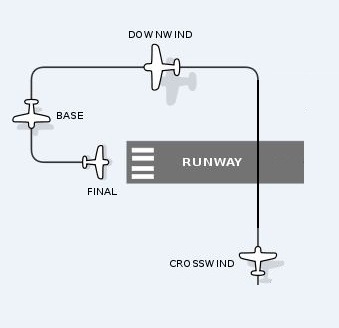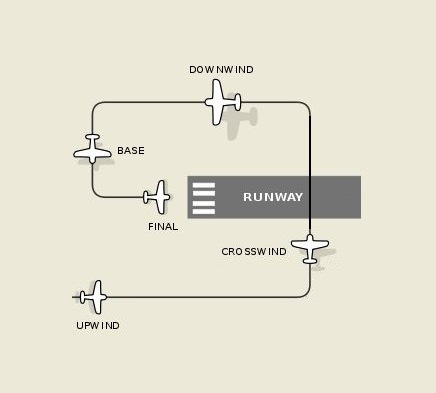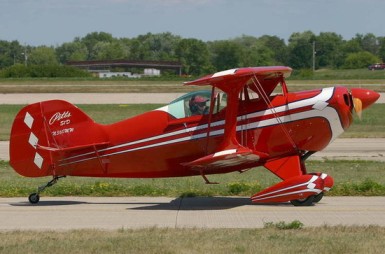The airport traffic pattern is the term used to describe the “route” that all pilots are supposed to fly when landing at or departing from an uncontrolled airport. An uncontrolled airport is one that does not have a control tower and/or air traffic controllers. This is very common at general aviation airports. Many people think that all airplanes are constantly being told what direction to turn and when to climb/descend by these controllers but that just isn’t how it works for general aviation. It’s pretty much like driving a car. You can go nearly anywhere you want as long as you follow the rules. Obviously, there are exceptions and the more populated an area, the more controlled the airspace is. I am quite happy to live in the southwest where there is very little population and very little controlled airspace. Oh wait, the US Government has restricted HUGE sections of the southwest for military and other “secret” purposes so forget I said that.
The airport traffic pattern exists to aid the arrival to and departure from an airport. Every pilot is to follow the pattern so that everyone can reasonably expect to know what everyone else is doing. As part of student pilot training, a huge amount of time is spent “in the pattern” so one would expect that every pilot would have a good understanding. I think most pilots do. However; there is always the exception and boy to they stand out.
I’m a pretty accommodating sort but there are a few things… well, maybe a lot of things, that really get me fired up. Poor understanding of the airport traffic pattern is one of them (and this seems to go hand in hand with poor radio skills).
As students, pilots are taught to enter the downwind leg of the airport traffic pattern at a 45 degree angle as depicted in the following diagram.
Once you get out of training and into the real world, you quickly find that isn’t always so convenient. When approaching an airport from the downwind side, this works just fine. However; that is not always the case. It is perfectly ok to enter the pattern on a crosswind or upwind leg. The crosswind entry is generally flown at mid-field but it may vary somewhat based on other traffic in the pattern. Flying a crosswind at the departure end of the runway or even further out is acceptable.
It is the upwind entry, as depicted below, that is apparently very confusing to some folks. Many former military guys fly the upwind directly over the runway which is just fine and, in the case of formations of aircraft, necessary. The more common, in my experience, general aviation upwind is abeam the numbers on the opposite side of the runway as the downwind leg. The crosswind leg is generally at mid-field unless there is other traffic in the pattern in which case it is wherever allows you to best fit into that traffic.
How big should the traffic pattern be? Ah, yes – a common topic among pilots. Ideally, you should always be within gliding distance of the runway. This doesn’t always work – particularly after takeoff on the upwind and crosswind legs or when there are many aircraft in the pattern. However; in my opinion, most pilots fly a HUGE pattern that is wasteful, at a minimum, if not dangerous. My typical pattern is ALWAYS within 1/2 mile of the runway. To verify, I’ve performed a series of touch and goes and then imported my GPS track into Google Earth and measured the distances. Traffic plays a factor – especially when they are flying a 747 pattern. However; if there are only two-three aircraft in the pattern, all should be able to fly a normal/tight pattern and never be a factor to one another. Some of the heavy iron guys will tell you that they “must” in order to “get slowed down.” That makes no sense, they should slow down before entering the pattern and be within gliding distance just like everyone else.
One of these days while flying your normal pattern, pull the power to idle and see if you can make it to the runway. I’m betting you will be surprised that you cannot!






Leave a Reply